 W
WWater politics, sometimes called hydropolitics, is politics affected by the availability of water and water resources, a necessity for all life forms and human development.
 W
WThe Atatürk Dam, originally the Karababa Dam, is a zoned rock-fill dam with a central core on the Euphrates River on the border of Adıyaman Province and Şanlıurfa Province in the Southeastern Anatolia Region of Turkey. Built both to generate electricity and to irrigate the plains in the region, it was renamed in honour of Mustafa Kemal Atatürk (1881–1938), the founder of the Turkish Republic. The construction began in 1983 and was completed in 1990. The dam and the hydroelectric power plant, which went into service after the upfilling of the reservoir was completed in 1992, are operated by the State Hydraulic Works (DSİ). The reservoir created behind the dam, called Atatürk Reservoir, is the third largest in Turkey.
 W
WMaude Victoria Barlow is a Canadian author and activist. She is a founding member of the Council of Canadians, a citizens' advocacy organization with members and chapters across Canada. She is also the co-founder of the Blue Planet Project, which works internationally for the human right to water. Barlow chairs the board of Washington-based Food & Water Watch, is a founding member of the San Francisco–based International Forum on Globalization, and a Councillor with the Hamburg-based World Future Council. In 2008/2009, she served as Senior Advisor on Water to the 63rd President of the United Nations General Assembly and was a leader in the campaign to have water recognized as a human right by the UN.
 W
WThe California water wars were a series of political conflicts between the city of Los Angeles and farmers and ranchers in the Owens Valley of Eastern California over water rights.
 W
WCentral Plains Water, or, more fully, the Central Plains Water Enhancement Scheme, is a large-scale proposal for water diversion, damming, reticulation and irrigation for the Central Plains of Canterbury, New Zealand. Construction started on the scheme in 2014.
 W
WThe Cochabamba Water War was a series of protests that took place in Cochabamba, Bolivia's fourth largest city, between December 1999 and April 2000 in response to the privatization of the city's municipal water supply company SEMAPA. The wave of demonstrations and police violence was described as a public uprising against water prices.
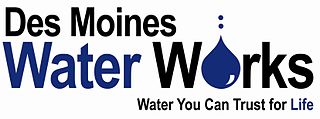 W
WThe Des Moines Water Works (DMWW) is a publicly owned, municipal water utility founded 1871 in Des Moines, Iowa, which provides water to half a million residents of the greater Des Moines metropolitan area. As of 2017, it has three treatment facilities. In March 2015, the DMWW board sued three Iowa counties for violating the Clean Water Act with high nitrate discharges, which contribute to hypoxia in the Gulf of Mexico.
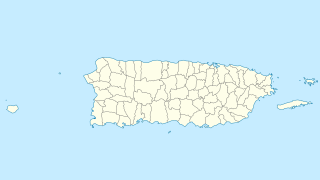 W
WThe Dorado Ground Water Contamination Site is one of 18 sites listed on the EPA’s National Priorities List in Puerto Rico, a territory of the United States, identified as posing a risk to human health and/or the environment because of a contamination plume in the underlying karst aquifer. Located in north-central Puerto Rico, 20 mi (32 km) to the west of the capital city, San Juan, the Dorado Ground Water Contamination site is located within the Maguayo and Dorado Urbano public water systems, and is the source of drinking water for more than 67,000 people. This site first came under scrutiny by officials in the 1980s and it was officially added to the EPA's Superfund list on September 9, 2016. The EPA is in the process of examining the precise extent and location of this contaminated groundwater plume and, at this time, the contaminants cannot be attributed to any specific source. In the wake of Hurricane Maria, the site has come under increased scrutiny because locals desperate for a source of safe drinking water have been using wells on the superfund site.
 W
WThe draining of the Mesopotamian Marshes occurred in Iraq and to a smaller degree in Iran between the 1950s and 1990s to clear large areas of the marshes in the Tigris-Euphrates river system. Formerly covering an area of around 20,000 km2 (7,700 sq mi), the main sub-marshes, the Hawizeh, Central, and Hammar marshes and all three were drained at different times for different reasons.
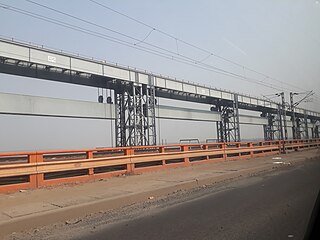 W
WFarakka Barrage is a barrage across the Ganga river located in Murshidabad district in the Indian state of West Bengal, roughly 18 kilometres (11 mi) from the border with Bangladesh near Shibganj. Farakka Barrage Township is located in Farakka in Murshidabad district. Construction of the Farakka barrage started in 1962, was completed in 1970 at a cost of $208 million. Operations began on 21 April 1975. The barrage is about 2,304 metres (7,559 ft) long. The Feeder Canal (Farakka) from the barrage to the Bhagirathi-Hooghly River is about 42 km (26 mi) long.
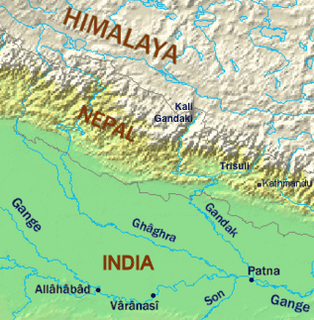 W
WA long-standing dispute exists between India and Bangladesh over the appropriate allocation, and development, of the water resources of the Ganges River, which flows from northern India into Bangladesh. The issue had remained a subject of conflict for almost 35 years, with several bilateral agreements and rounds of talks failing to produce results.
 W
WThe Great Recycling and Northern Development (GRAND) Canal of North America or GCNA is a water management proposal designed by Newfoundland engineer Thomas Kierans to alleviate North American freshwater shortage problems. It proposed damming James Bay, using the techniques of the Zuiderzee/IJsselmeer, to prevent its waters mixing with the salt water of Hudson Bay to the north. This would produce an enormous freshwater lake, some of which would be pumped south into Georgian Bay where it would increase the freshwater levels of the lower Great Lakes. The flow would be the equivalent to 2.5 Niagara Falls.
 W
WThe International Water Management Institute (IWMI) is a non-profit international water management research organisation under the CGIAR with its headquarters in Colombo, Sri Lanka, and offices across Africa and Asia. Research at the Institute focuses on improving how water and land resources are managed, with the aim of underpinning food security and reducing poverty while safeguarding the environment.
 W
WThe terms international waters or trans-boundary waters apply where any of the following types of bodies of water transcend international boundaries: oceans, large marine ecosystems, enclosed or semi-enclosed regional seas and estuaries, rivers, lakes, groundwater systems (aquifers), and wetlands.
 W
WThe Jordan Valley Unified Water Plan, commonly known as the "Johnston Plan", was a plan for the unified water resource development of the Jordan Valley. It was negotiated and developed by US ambassador Eric Johnston between 1953 and 1955, and based on an earlier plan commissioned by United Nations Relief and Works Agency for Palestine Refugees in the Near East (UNRWA). Modeled upon the Tennessee Valley Authority's engineered development plan, it was approved by technical water committees of all the regional riparian countries—Israel, Jordan, Lebanon and Syria. Though the plan was rejected by the Arab League, both Israel and Jordan undertook to abide by their allocations under the plan. The US provided funding for Israel's National Water Carrier after receiving assurances from Israel that it would continue to abide by the plan's allocations. Similar funding was provided for Jordan's East Ghor Main Canal project after similar assurances were obtained from Jordan.
 W
WPrimarily a wholesaler of water to cities and improvement districts within Salt Lake County, Jordan Valley Water Conservancy District is a political subdivision of the State of Utah and one of the largest water districts in the state. It was created in 1951 under the Water Conservancy District Act and was called Salt Lake County Water Conservancy District until 1999. Jordan Valley Water is the largest petitioner of the Central Utah Project, a Federal water project which will annually provide up to 71,400 acre-feet (88,100,000 m3) of water to Jordan Valley Water by 2021.
 W
WThe King Abdullah Canal is the largest irrigation canal system in Jordan and runs parallel to the east bank of the Jordan River. It was previously known as the East Ghor Main Canal and renamed in 1987 after Abdullah I of Jordan.
 W
WAs a body of water that crosses numerous international political borders, the Nile river is subject to multiple political interactions. It is the world's longest river flowing 6,700 kilometers through ten countries in northeastern Africa – Rwanda, Burundi, Democratic Republic of the Congo (DRC), Tanzania, Kenya, Uganda, Ethiopia, South Sudan, Sudan and Egypt with varying climates.
 W
WThe Obed Mountain coal mine spill was a mining disaster that occurred on October 31, 2013, when a waste pit at the Obed Mountain Mine failed near the town of Hinton in Alberta, Canada. Following the collapse of a tailings dam, up to one billion liters (260 million US gal) of wastewater flooded into the nearby Athabasca River in what may be the largest coal slurry spill in Canadian history. The river's waters experienced immediate spikes in arsenic, metals, and carcinogenic polycyclic aromatic hydrocarbons (PAHs). Although the Athabasca was deemed safe for drinking and wildlife by the end of the year, the extent of the environment's recovery remains in doubt.
 W
WThe United Nations World Water Development Report (WWDR) is a global report that provides an authoritative, comprehensive assessment of the world’s freshwater resources. It is produced annually by the World Water Assessment Programme and released by UN-Water.
 W
WUnited Nations Water (UN-Water) is an interagency mechanism that coordinates the efforts of United Nations entities and international organizations working on water and sanitation issues."Over 30 UN organizations carry out water and sanitation programmes, reflecting the fact that water issues run through all of the UN's main focus areas. UN-Water's role is to coordinate so that the UN family 'delivers as one' in response to water related challenges."
 W
WWASH is an acronym that stands for "water, sanitation and hygiene". Universal, affordable and sustainable access to WASH is a key public health issue within international development and is the focus of the first two targets of Sustainable Development Goal 6. Targets 6.1 and 6.2 aim at equitable and accessible water and sanitation for all. "Access to WASH" includes safe water, adequate sanitation and hygiene education. Improving access to WASH services can improve health, life expectancy, student learning, gender equality, and other important issues of international development. This can reduce illness and death, and also affect poverty reduction and socio-economic development. Challenges include providing services to urban slums, improper management of water distribution systems, failures of WASH systems over time, providing equitable access to drinking water supply and gender issues. WASH services have to be provided to household locations but also to schools, healthcare facilities, work places, markets, prisons, train stations, public locations etc.
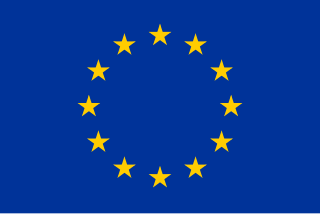 W
WThe Water Framework Directive 2000/60/EC is an EU directive which commits European Union member states to achieve good qualitative and quantitative status of all water bodies by 2015. It is a framework in the sense that it prescribes steps to reach the common goal rather than adopting the more traditional limit value approach. The Directive's aim for 'good status' for all water bodies will not be achieved, with 47% of EU water bodies covered by the Directive failing to achieve the aim.
 W
WWater issues in developing countries include scarcity of drinking-water, poor infrastructure for water access, floods and droughts, and the contamination of rivers and large dams. Over one billion people in developing countries have inadequate access to clean water. Barriers to addressing water problems in developing nations include poverty, climate change, and poor governance.
 W
WWater politics, sometimes called hydropolitics, is politics affected by the availability of water and water resources, a necessity for all life forms and human development.
 W
WWater politics in the Middle East deals with control of the water resources of the Middle East, an arid region where issues of the use, supply, control, and allocation of water are of central economic importance. Politically contested watersheds include the Tigris–Euphrates river system which drains to the south-east through Iraq into the Persian Gulf, the Nile basin which drains northward through Egypt into the eastern Mediterranean Sea, and the Jordan River basin which flows into the Dead Sea, a land-locked and highly saline sea bordered by Jordan to the east and Israel to the west.
 W
WWater protectors are activists, organizers, and cultural workers focused on the defense of the world's water and water systems. The water protector name, analysis and style of activism arose from Indigenous communities in North America during the Dakota Access Pipeline protests at the Standing Rock Indian Reservation, which began with an encampment on LaDonna Brave Bull Allard’s land in April, 2016. Water protectors are very similar to land defenders, but are distinguished from other environmental activists by this philosophy and approach that is rooted in an indigenous cultural perspective that sees water and the land as sacred.
 W
WWorld Toilet Day (WTD) is an official United Nations international observance day on 19 November to inspire action to tackle the global sanitation crisis. Worldwide, 4.2 billion people live without "safely managed sanitation" and around 673 million people practice open defecation. Sustainable Development Goal 6 aims to "Ensure availability and sustainable management of water and sanitation for all". In particular, target 6.2 is to "End open defecation and provide access to sanitation and hygiene". When the Sustainable Development Goals Report 2020 was published, United Nations Secretary-General António Guterres said, "Today, Sustainable Development Goal 6 is badly off track" and it "is hindering progress on the 2030 Agenda, the realization of human rights and the achievement of peace and security around the world".
 W
WWorld Water Day is an annual United Nations (UN) observance day held on 22 March that highlights the importance of fresh water. The day is used to advocate for the sustainable management of freshwater resources. The theme of each day focuses on topics relevant to clean water, sanitation and hygiene (WASH), which is in line with the targets of Sustainable Development Goal 6. The UN World Water Development Report (WWDR) is released each year around World Water Day.